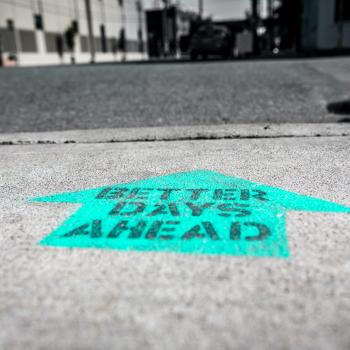We live in a world full of options. We have more choices than we can make. Consider the cereal aisle or what to watch on Netflix. When we chose something, we chose it because we have a lot of hope in the object of our choice. We expect things to work out. To have a happy ending. Otherwise, we wouldn’t waste our time on it.
The Project Mood Curve has 4 distinct phases. The first of these is the forming stage. It is the season of a project, relationship, or organization that we often describe as “the honeymoon phase”. And not all of our choices have happy endings.

The honeymoon phase is a beautiful and necessary place. But it has its dangers. Our culture often warns this. But the basic warning is simply: it will end. Our advice stops at “enjoy it while it lasts”. The dangers go deeper, which is actually good news because the same depth of danger is the depth of opportunity. The honeymoon phase is not just a runaway train that will one day come to a screeching halt and change everything. It is a proper and wonderful phase. And within these dangers are the opportunities to make the most of it.
1) Subtle Fear
Relationships and projects are more of a gamble than we like to admit on the front end. Most of what we try ends in disappointment. There is a subtle fear within the honeymoon phase that, no matter how great it seems now, our relationship will one day crash and burn.
The subtle fear that our relationship (or project or organization) won’t survive is dangerous because the solution we adopt is a posture of self-preservation. We try to stay in the honeymoon phase forever. We try to control circumstances so that we are always swooning with romance. It can short-circuit the rest of the mood curve and help bring about the very doom we fear.
2) Expectations
Another response to the concern our relationship won’t last is we start to prepare for the fight against our partner. The way we do this is by doubling down on our expectations.
Expectations are a dangerous thing. They can be wonderful too, if shared and let go of and fought for according to the truth. But too often, especially in the honeymoon phase, we start to demand our way. Insisting our expectations become a reality is our attempt to avoid the second phase of The Mood Curve – the pit of despair.
Our expectations are so tricky, we can have them and fortify them and insist on them without even knowing that we have them or specifically what they are. Through self-deception and partner manipulation, we strive to have our own way. The solution is to communicate, say the hard things, seek the truth together.
3) Patterns
![]()
One of the problems with the honeymoon phase is that we delay the harder things until later. Why should we talk about what kind of church we’ll attend when we are married when our fiancé is just so cute and we’d rather cuddle on the couch?
Engaged couples have limited time together. They are planning a big event and are still living separate lives. There is nothing that ends the honeymoon phase more than familiarity. After the marriage, things are different. There is no clear event to plan for and they are spending a lot more time together. A lot of couples find, as their marriage begins, that the patterns they developed as dating partners have followed them into their new home.
We say “we’ll do this better or different later”, but the truth is the later it gets, the harder it is to change. Honeymooners who are chasing passion and nothing else will have a hard time when the passion fades. Honeymooners who are channeling their passion into a transcendent vision, goals, and meaningful truths will set themselves up for the long journey of intimacy.
4) Complacency
Perhaps the biggest and most documented danger of the honeymoon phase is complacency. Our society has found a way around this. We glorify superficiality, as if it is the ultimate end. So we view the closing of the honeymoon phase as a tragedy. It is the same vein as those who say their high school football days were “the glory days”. We incorrectly cast the honeymoon phase as “the glory days”.
The result is a world of relationships deficient in true intimacy, mired in untenable sensuality, and blown here and there by the winds of circumstance. When reality and expectation finally collapses, there is nothing left.
The honeymoon phase is beautiful. But it is not the most beautiful. Even going through hard things is better than the honeymoon phase. It might not feel like it, but talking through conflict, sharing in vulnerability, and learning the strength of perseverance together is a necessary component to healthy relationships, let alone excellent ones. If all we want is the honeymoon phase, it is all we will get. And we will be the worse off for it.












